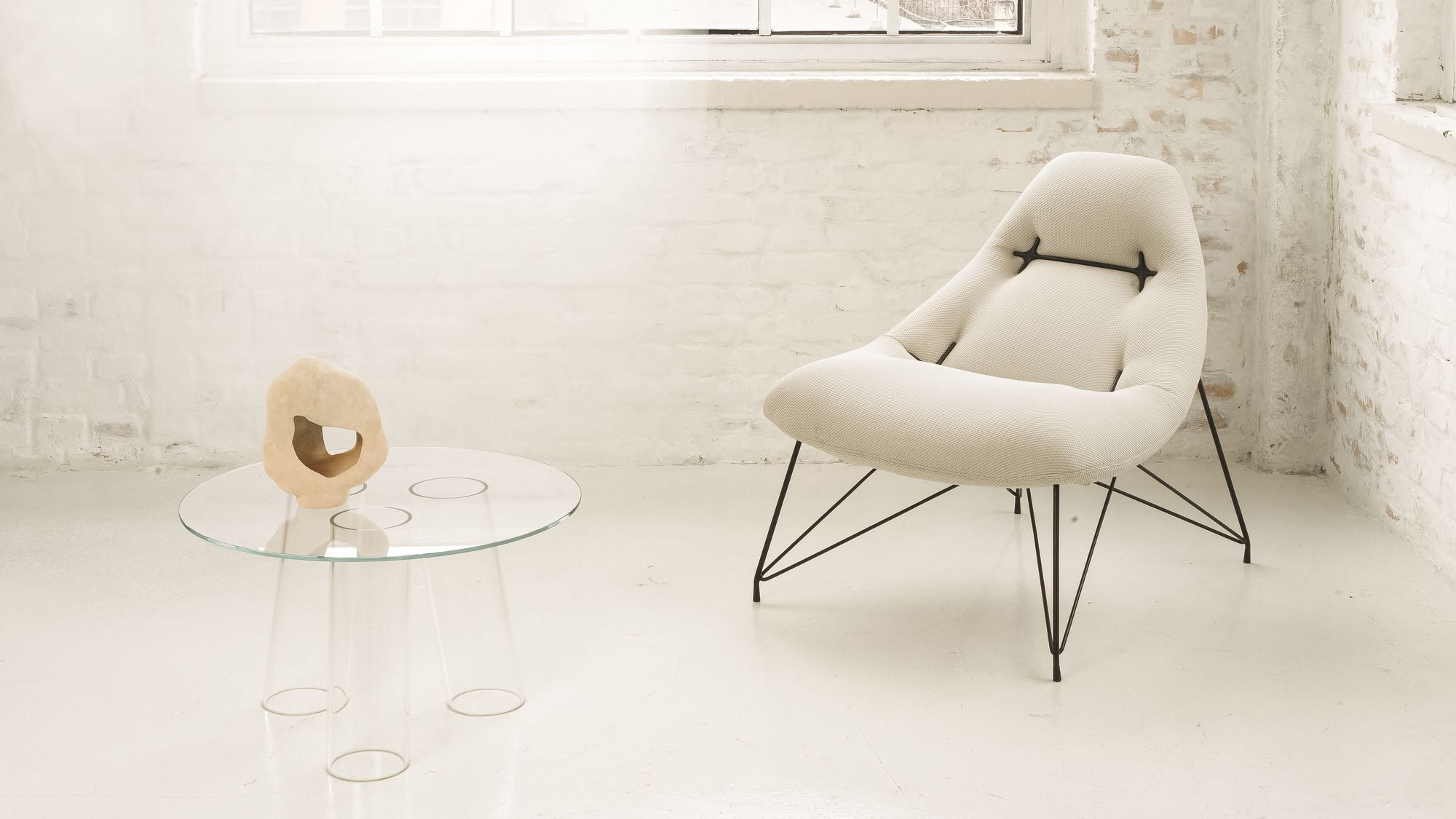Is it still possible to be innovative with a classic piece of furniture like an armchair? We asked Annabella Hevesi, co-founder of Line and Round and creator of the Peach Easy Chair, about the technological innovations that this piece of furniture has to offer. The chair, which has an appealingly soft feel while emphasizing the weight of the metal, made its debut in Stockholm and was shown in Milan and Shanghai. Interview.
Many people start a business with a job on the side, but Annabella Hevesi and Gábor Bella founded Line and Round design studio with an all-or-nothing attitude back in 2018. Since then, the company has been growing organically and continuously, with projects such as the new, unique furniture for the public spaces of the listed Opera House.
As Annabella explains, she has been interested in the relationship between space and furniture since her diploma project, and her creative approach is characterized by an adaptive design approach, meaning that she grounds each design in a strong analytical process, with the contextual background of the object at the center. As she highlights, seating furniture is what’s closest to her heart, so it is no coincidence that her latest product concept is also in this category. “The Peach Easy Chair is emblematic of my design thinking. Many people don’t realize it, but there are countless factors that make creating a piece of seating furniture a complex task, making it one of the most difficult objects to design,” says Annabella. The innovative furniture was created as part of the Design LAB program, a collaboration between Kárpitos Partner Group and the Hungarian Fashion & Design Agency, and recently won the Design Shanghai Talents “Best Commercial Product Design” award.
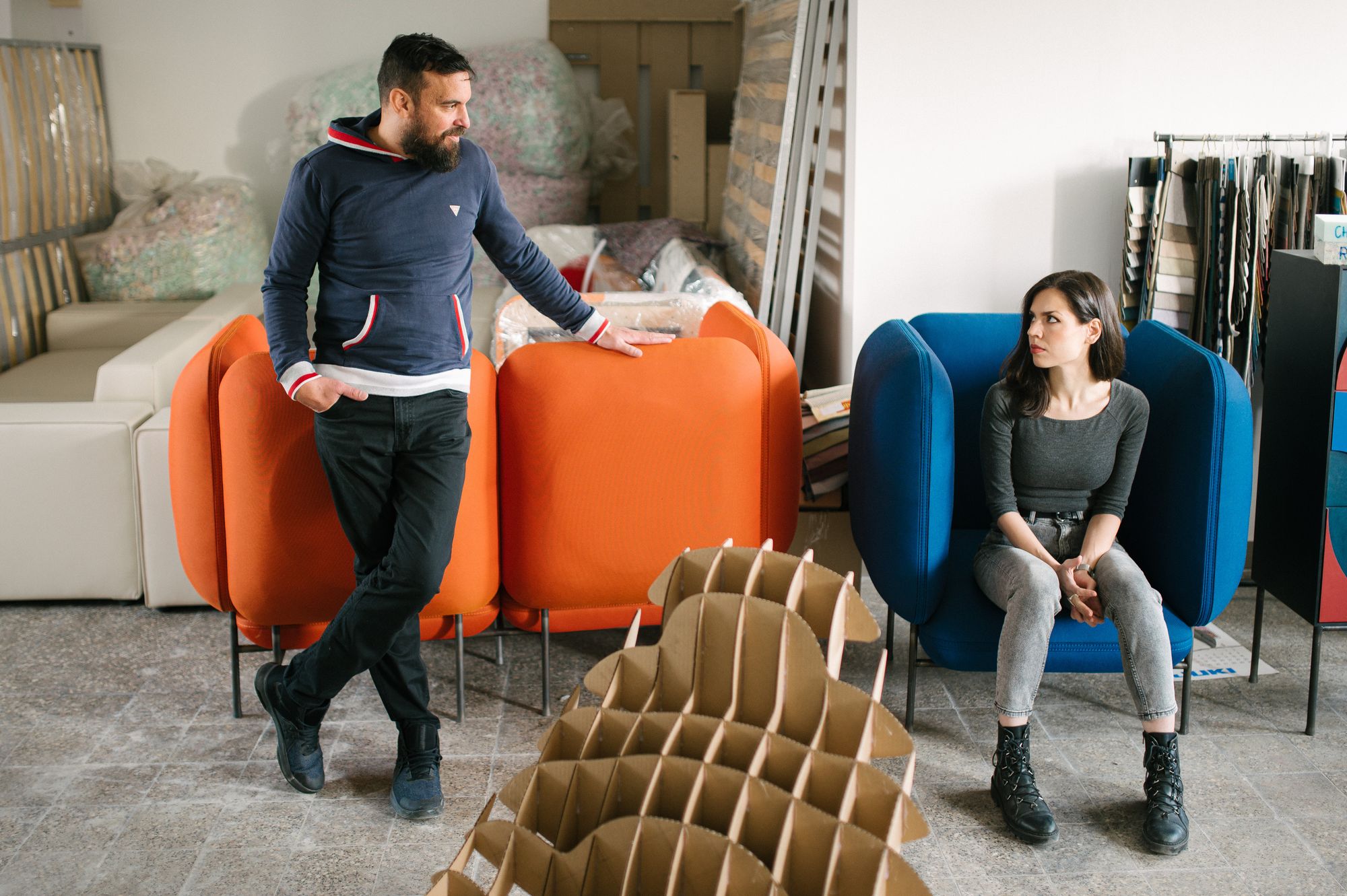
What inspired the concept of the Peach Easy Chair?
The inspiration was essentially drawn from the lessons I learned from my previous collection, the Dedas furniture, where one of the challenges was the shaping of the cushioning—in fact, the softness of the furniture depends on it, which is usually very difficult to create. When we started to develop the Dedas product, the feedback we got from everyone was that the only solution was molded foam, which involves extra tooling costs. By contrast, we finally succeeded in developing the geometry of Dedas from custom-cut foam. However, even though we used recycled foam, the production process was still wasteful and created design limitations.
In the case of the Peach, we were interested in how to distort the shape of the otherwise flat, blocky foam—taking advantage of its basic properties—to make it ergonomic and comfortable. The aim was to create a more economical and sustainable production model, which had both technical and aesthetic consequences. Thus, I also strove to ensure that the metallic elements that distorted the foam mechanically would contribute to the visuality, making the furniture iconic.
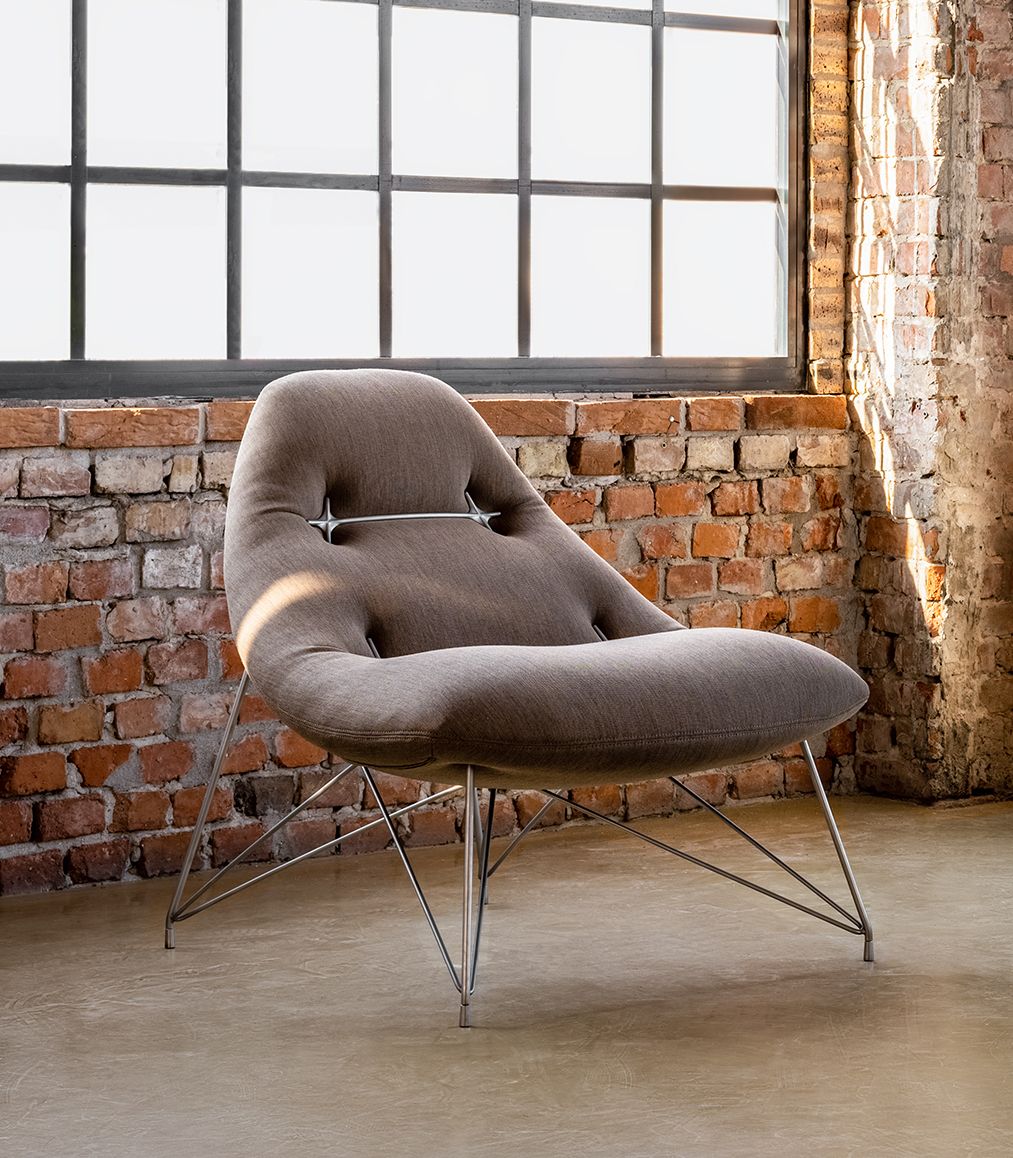
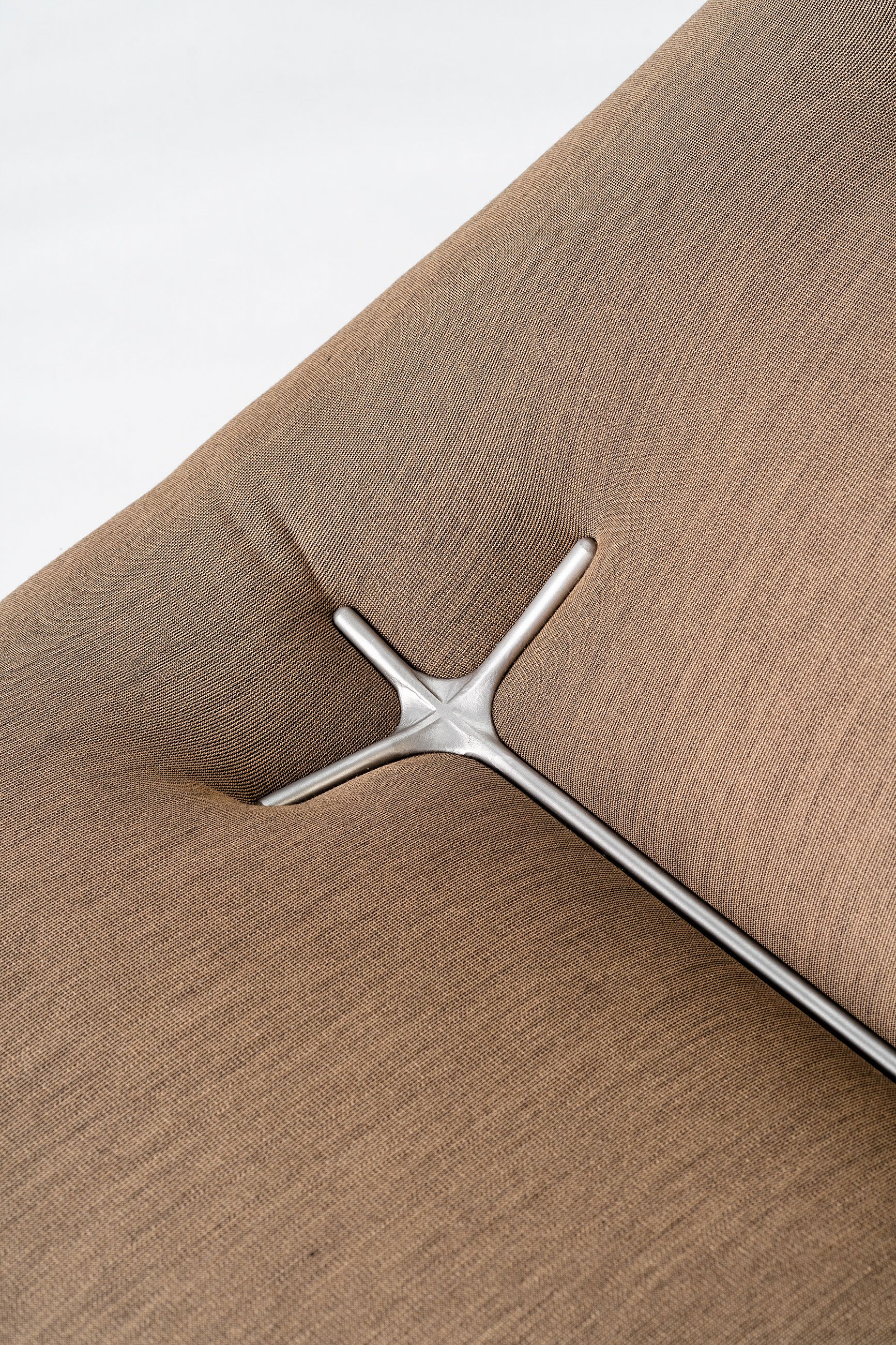
While the Dedas seating line—part of the Burnt Geometry collection—launched last year draws on Hungarian cultural references, draws on Hungarian cultural references, the character of Peach evokes the Italian design of the seventies. What is it about Italian object design that inspires you?
I find that in Hungary there is a strong gravitation towards Scandinavian design. The Scandinavian values are close to my heart as well, and although it brings a high standard beautifully, I’m getting a bit saturated with it. Perhaps this refined visual culture is surpassed for me by the somewhat more provocative “Italian design”: while maintaining a perfectly polished sense of proportion, it also has a sense of pushing the boundaries, daring to be bold, and thus adding something extra to objects. When designing Peach, this connection was not really a conscious decision—I mean, it was obviously not the intention to make the furniture “Italian”, but at the same time I was inspired by several Italian pieces of furniture. As a result, perhaps the airiness and softness of the furniture, and the contrasting metallic elements, create a link with the ‘Italian design’ ethos. At least for me, this is confirmed by the increased interest from Italian companies and designers during our exhibitions abroad, and the opportunity to exhibit my work in Naples as a result of the Alcova presentation.
Please tell us about the design process of the Peach. How did you arrive at its final form?
When I started to design the furniture, although the concept of technical innovation was already given, it did not yet have a definite form. I knew that I wanted to distort the foam with some sort of stapling and in doing so make it comfortable and aesthetically pleasing, but not what this would mean in terms of form and where these elements would be placed.
In fact, I started to think more deeply about the general nature and role of the chair: what I as a designer think about the chair itself. I usually refer to furniture as a bridge between people and space. This transition can involve several different design areas, especially for upholstered furniture. As we move away from architecture, the perspective of the interior designer, the product designer, textile designer and, in my case, because of the metallic element, even the perspective of the jewelry designer can appear, as we move closer to the human—and as we move from the chair leg to the chair cover. This motivated me to look for analogies to my stapling solution in these areas. Examples of such analogies include the role of the zips and hooks in fashion, or the decorative use of deep stitching technology in the furniture industry. Eventually, this led me to the principle of how wall tie bars are used to strengthen buildings. When this parallel occurred to me, I decided to design the shape of the chair in such a way that the staples would give the impression of being connected to the seat of the chair through them. Partly this analogy has also shaped the jewel-like cross shape of the staples, which are produced using additive technology and 3D metal printing.
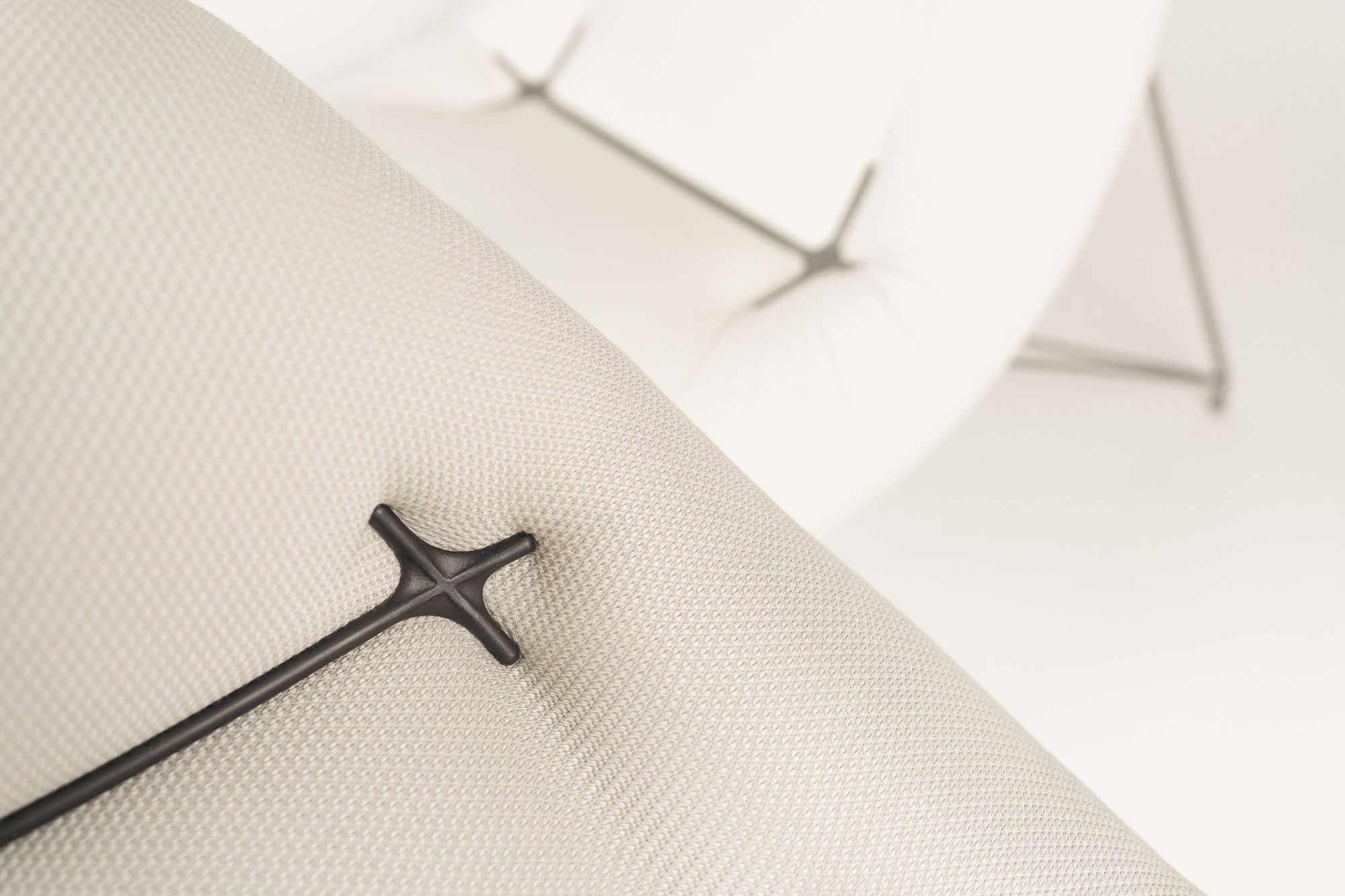
This is not the first time that you have worked with the upholstery and furniture company Kárpitos Partner Group, as the Dedas mentioned earlier is also the result of your joint work.
The biggest advantage of our partnership, following Dedas, is that we have already “broken each other in”, so to speak. A developer’s attitude is a characteristic of few contractors or manufacturers in Hungary. Peach probably wouldn’t have come into being in this form if it hadn’t been for this precedent, because by then we had already experienced first-hand how rewarding it is to take risks.
One of the challenges in developing Peach was the fact that the supporting structure of the foam is a tubular frame. This solution also raised several issues because the upholstery is traditionally attached by tacking, which doesn’t work with the metal structure. So, when I came up with this solution, it was actually a completely unknown issue for the Kárpitos Partner Group and an alternative solution had to be found for attaching the upholstery. As a result, the Peach’s upholstery surface is effectively treated as a blanket that is secured with a zipper. And the genius of the Kárpitos Partner Group was in designing the pattern of the upholstery so that the edge seams would run exactly where they needed to, taking into account the stretch of the fabric.
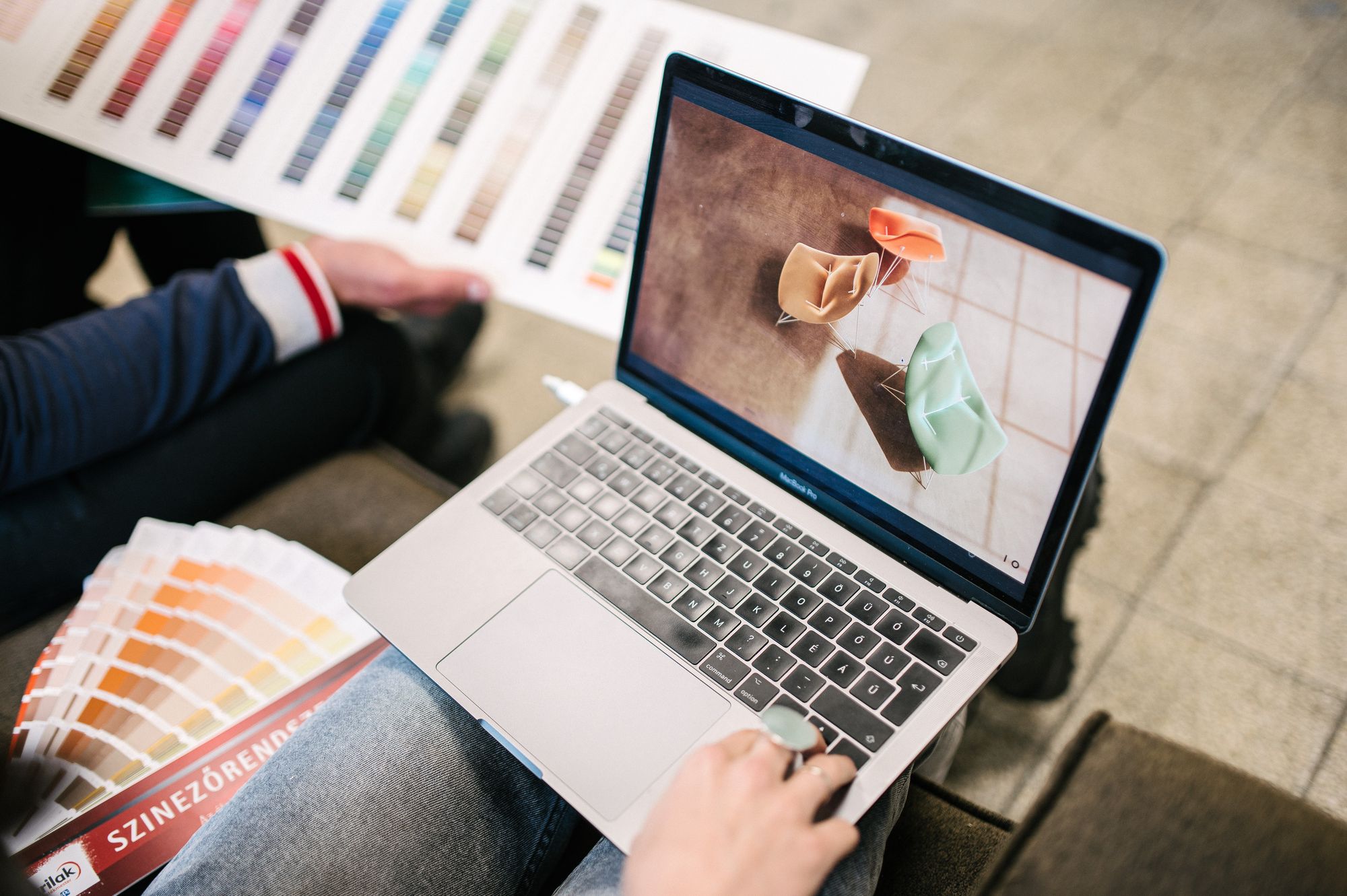
What is the current stage of Peach’s product development?
So far, three prototypes of the furniture have been made, which are not exactly the same: they differ in color, upholstery, and comfort. The latter is in fact a function of the foam layering. Foam is a cellular structure, and the thickness of the cell wall determines its physical properties, i.e. its degree of elasticity and hardness. And when a piece of seating furniture is made, different types of foam are layered, so it is not one foam that causes the sensation we feel when we sit down in an armchair.
Going to different exhibitions has been a great help in this area: in Stockholm, we took it upon ourselves to show the two different comfort levels so that people could try them out, and so that we can gather feedback from their experiences. I continued this in Milan so that we now have a body of knowledge that we can use in the further stages of product development.
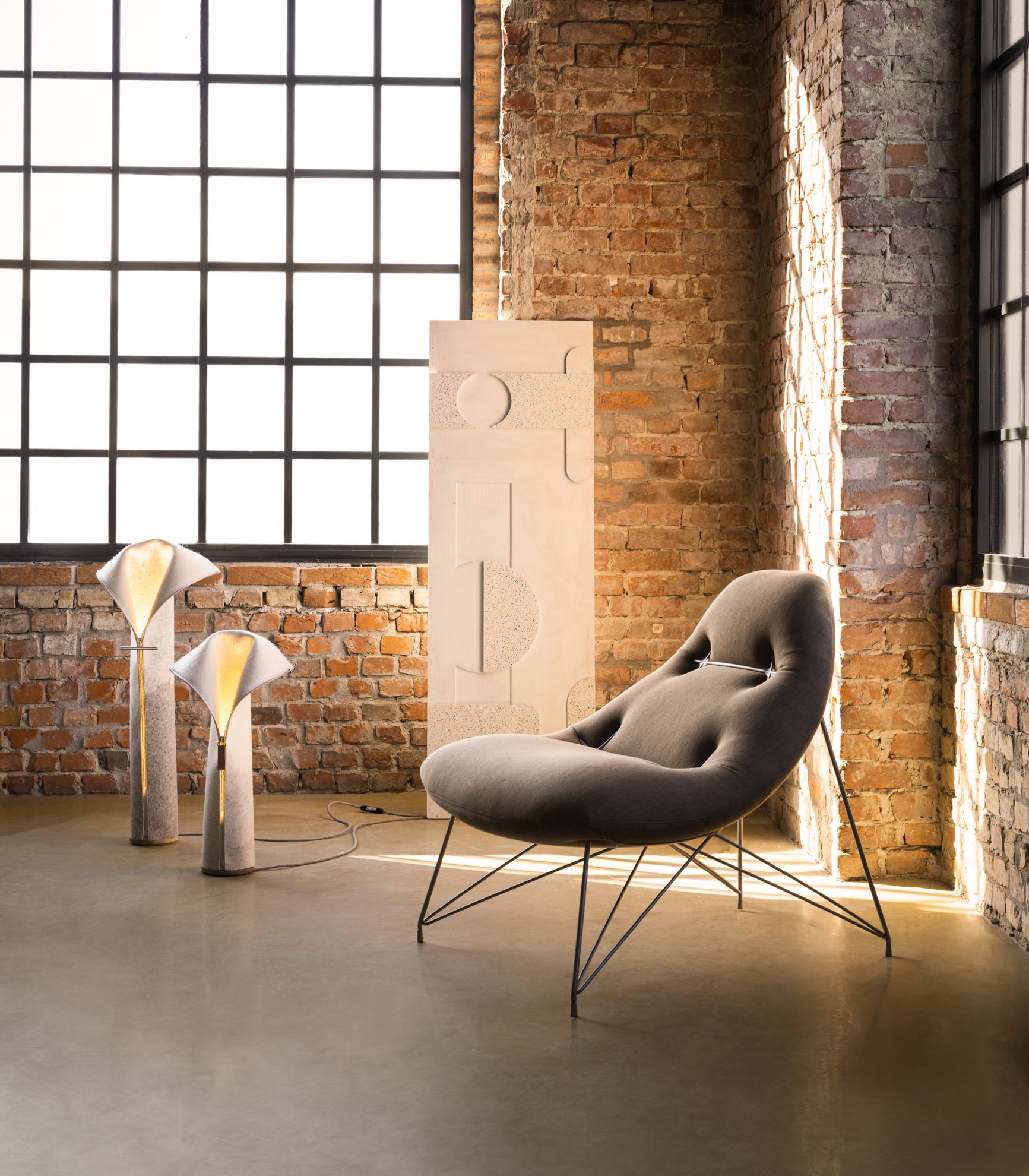
Peach is not only a single piece of furniture but also the starting point for a whole collection, Crosses. What are your plans for the future?
In fact, another piece of furniture has already been made, which also follows the basic principle of the Peach. But the Cross has a different seat geometry and the node itself is more provocative. It has been my experience, partly from the exhibitions and partly from the online presentations, that the metallic details used in Peach greatly appeal to people. Their seating surface has such a distinctive look that everyone wants to try the chair. But with the Cross furniture, I’m using this element even more emphatically.
I’m also planning to create a footrest to go with the Peach, which is also in keeping with the fact that the chair is primarily for home use, but also works well in the intimate lounge areas of hotels.
Coming soon, we will dive into the backstory of another design piece realized as part of the design LAB initiative. In the meantime, read more about the challenges of developing the Shape furniture collection and the Kilim lamp family.
Photos: HFDA (Kata Balogh, Milán Rácmolnár)

Foster + Partners and Buro Happold to build giant Polish airport with railway station
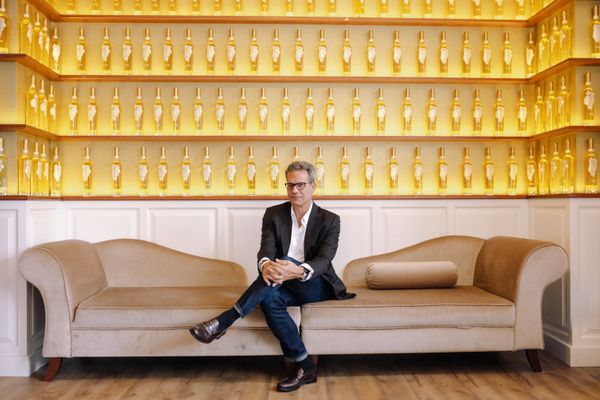
San Francisco’s become boring | Interview with Richard Florida










